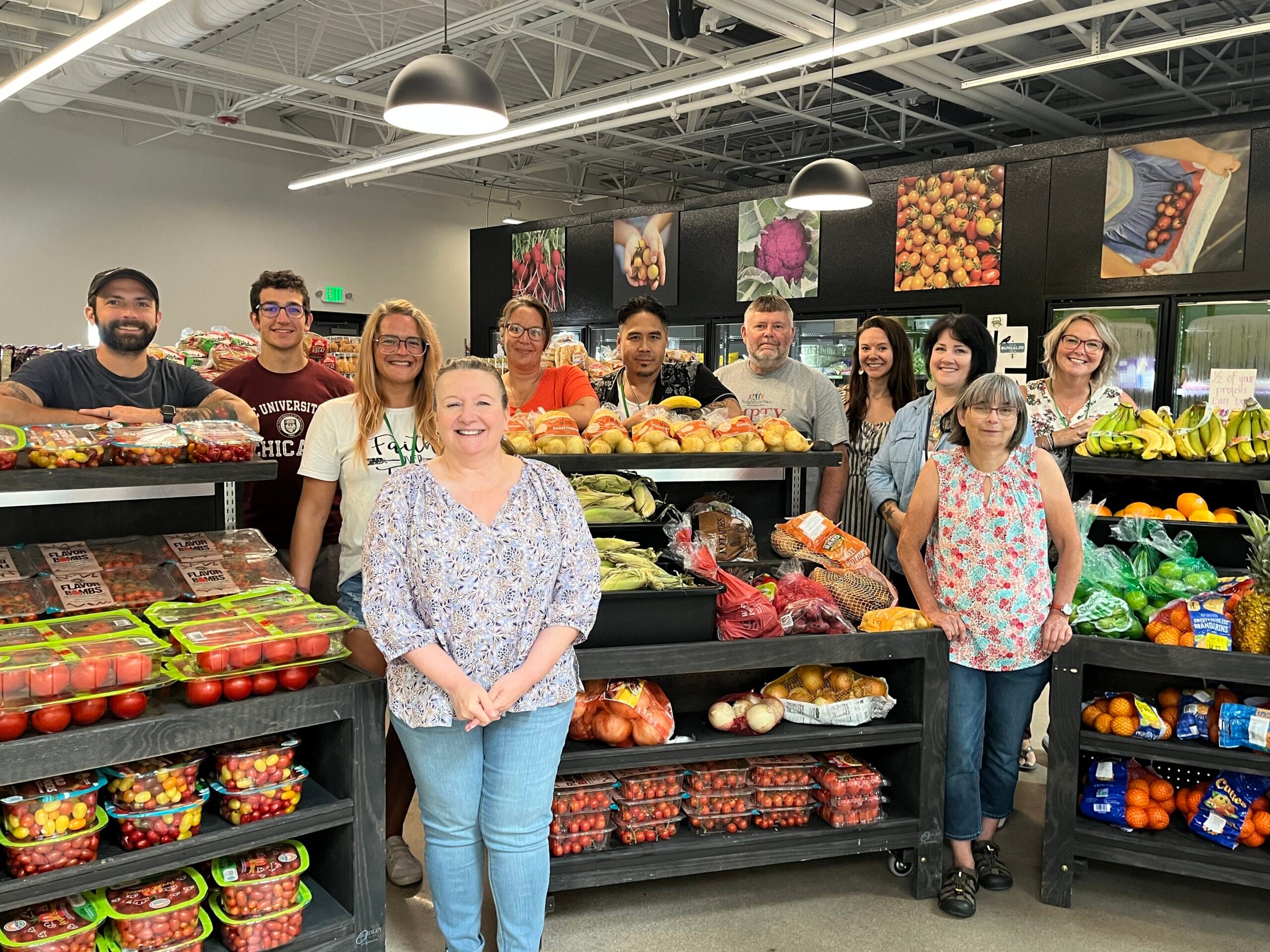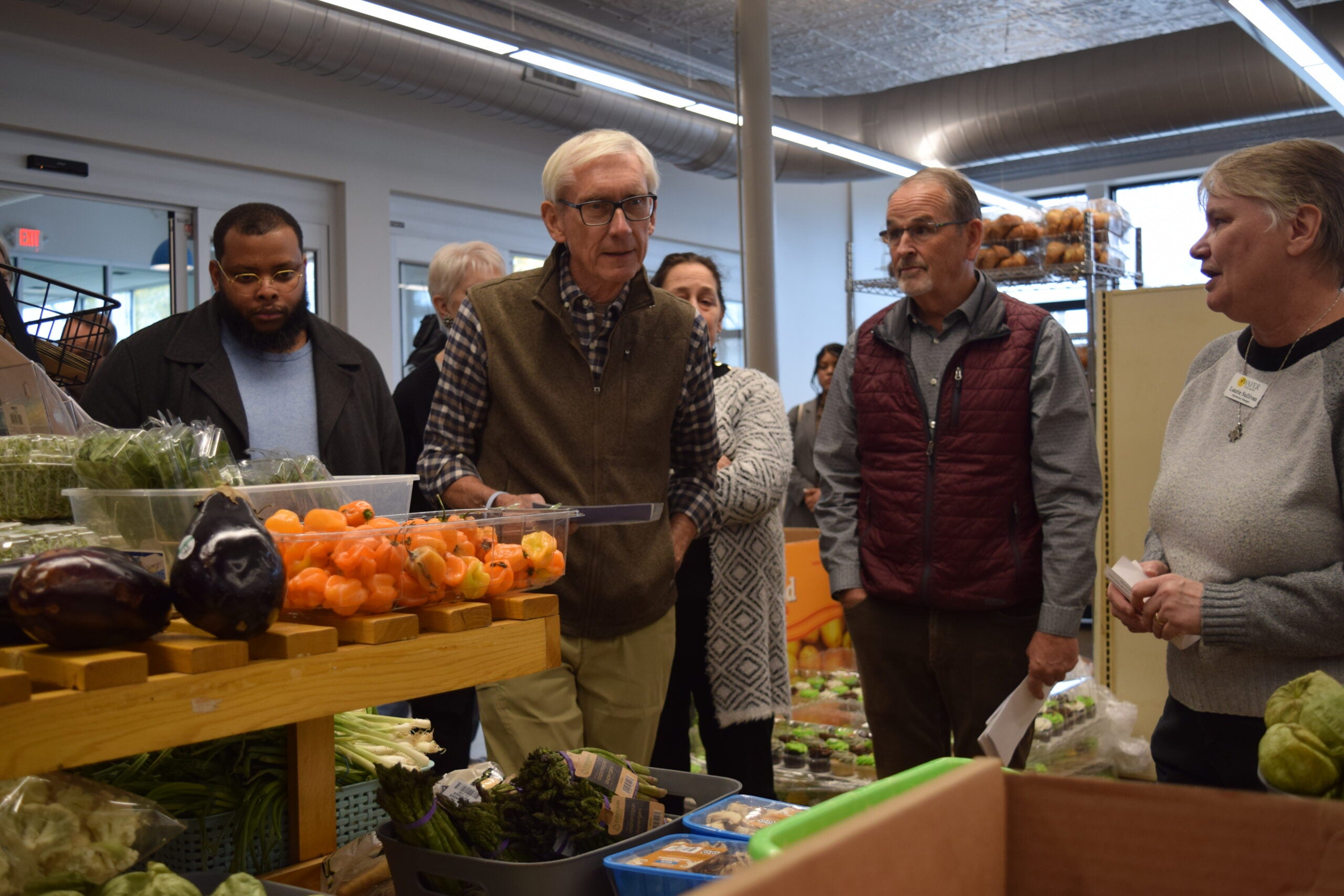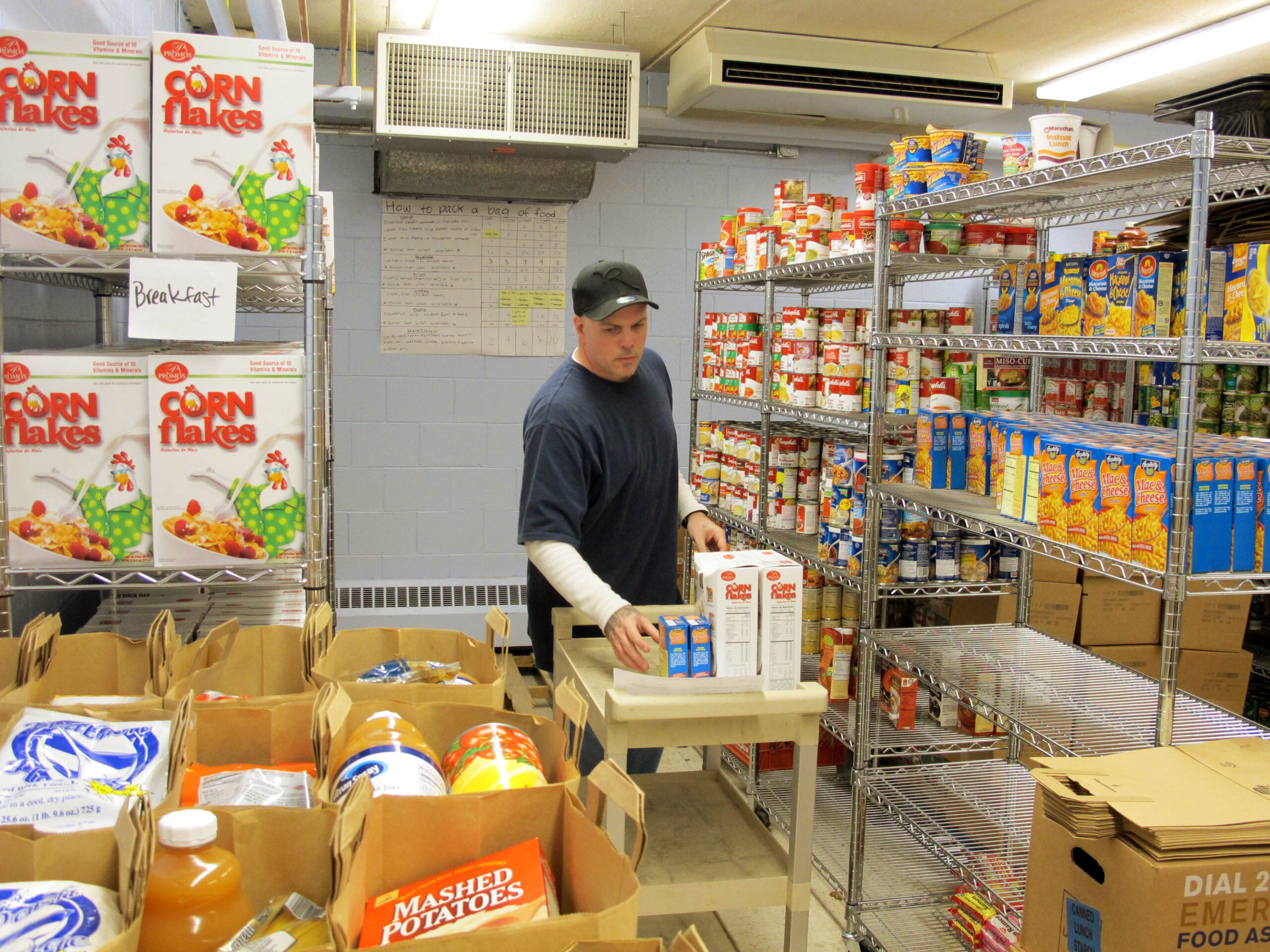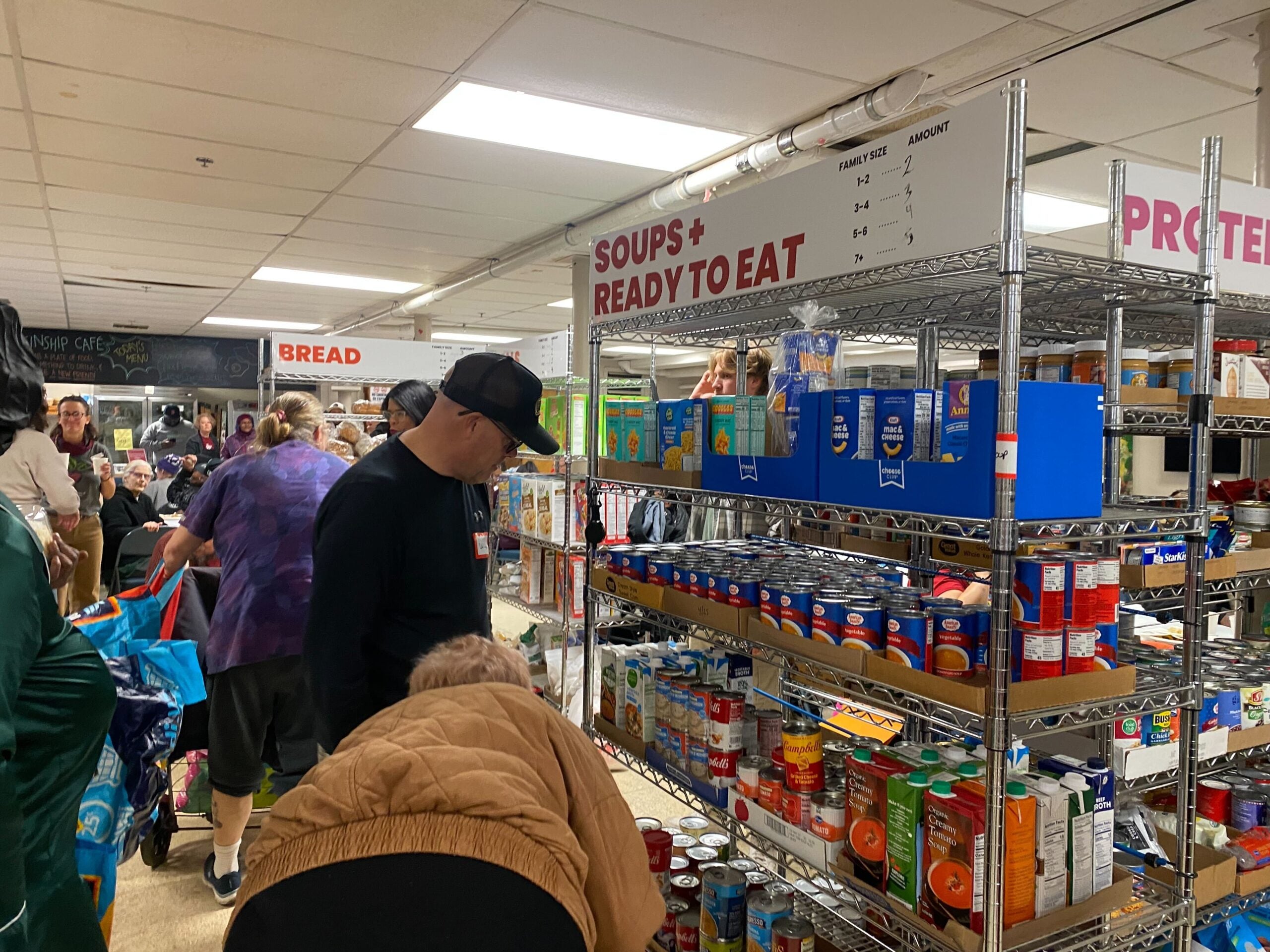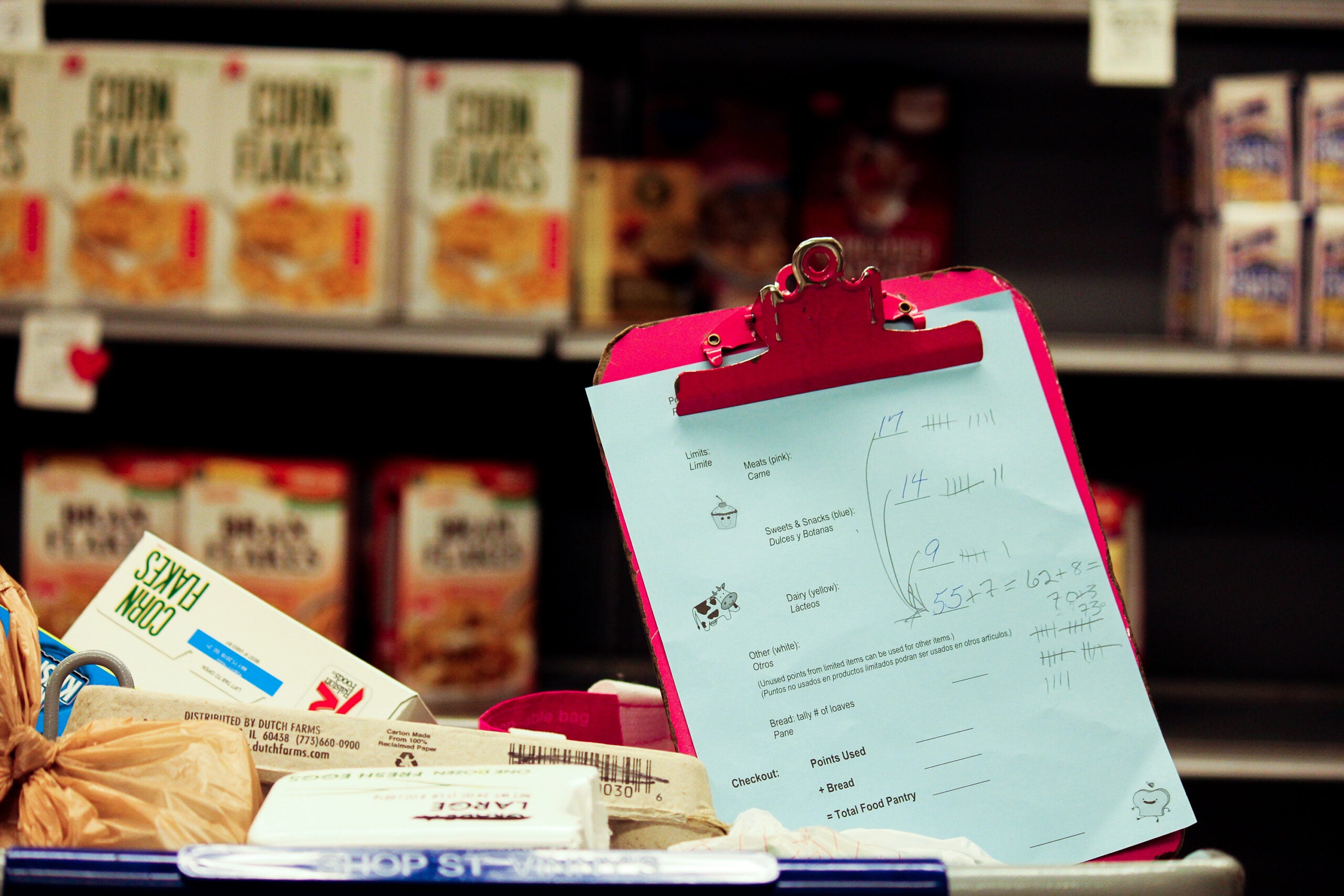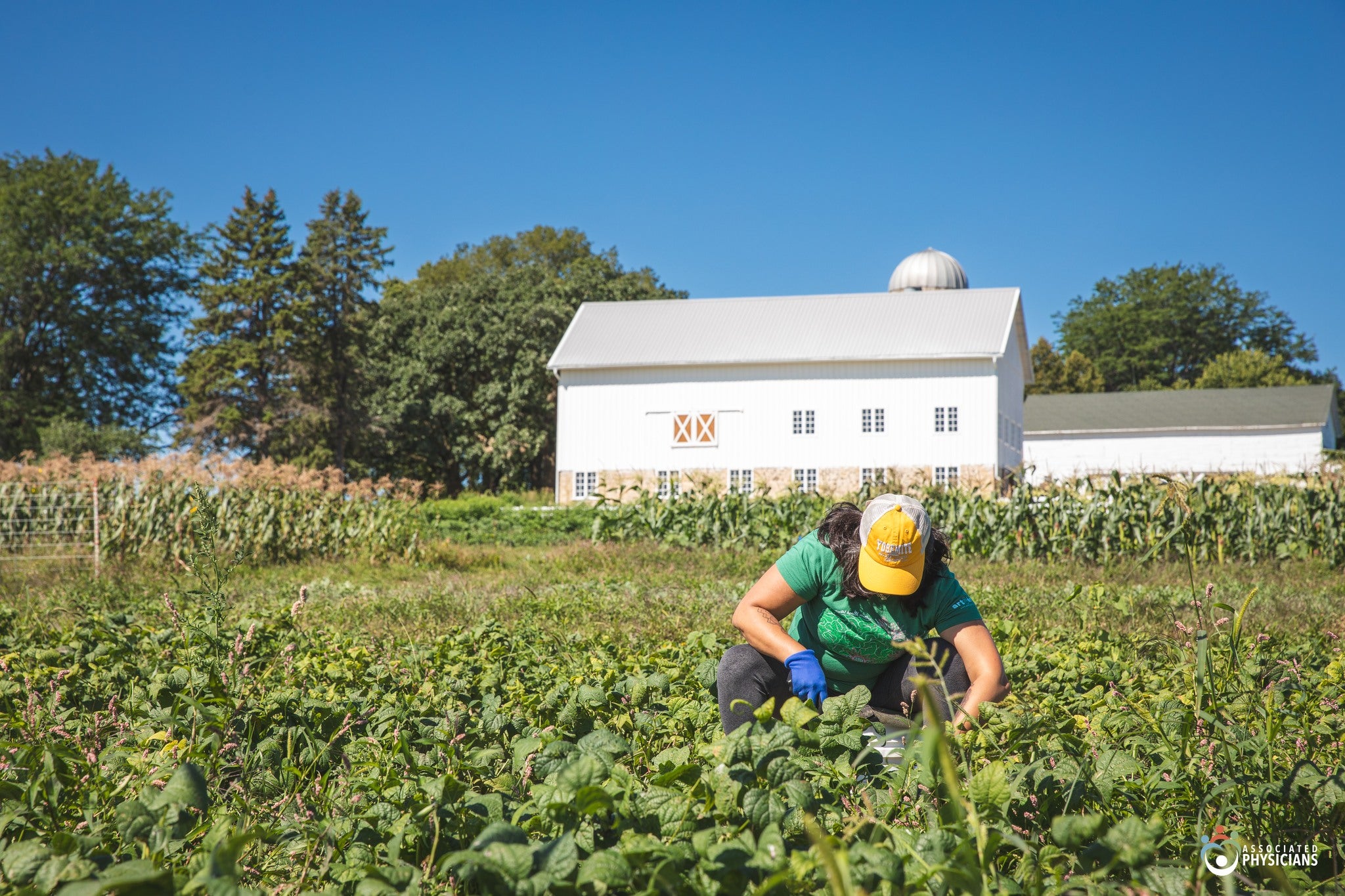At The Neighbors’ Place in Wausau, about 400 families each week browse the food pantry, choosing fresh produce, pantry stables and hygiene products.
Bread is stacked on shelves, perishable items are kept refrigerated, and there are pictures of tomatoes and radishes along the walls. It looks like a grocery store. But here, the food is free and families are limited to two shopping trips a month.
Like agencies around Wisconsin that provide food assistance, The Neighbors’ Place has seen demand for its help grow since federal pandemic aid programs have expired.
News with a little more humanity
WPR’s “Wisconsin Today” newsletter keeps you connected to the state you love without feeling overwhelmed. No paywall. No agenda. No corporate filter.
Donna Ambrose, executive director of the food pantry, said the number of clients has “steadily climbed” since March of this year when the federal government ended the extra FoodShare benefits.
“It’s not slowing down. We’re prepared for that, but it’s challenging,” Ambrose said.
It’s a similar story in Milwaukee, where demand is also on the rise.
Kinship Community Food Center in Milwaukee also offers crisis assistance and mentoring. Amanda Fahrendorf, the senior communications associate, said the number of new families visiting the center has increased 160 percent since this time last year.
“They’re constantly chasing and racing to make ends meet – working multiple jobs and taking care of other family members who are also not doing well. All of their resources are very limited,” Fahrendorf said.
Ambrose said the Wausau center is looking to meet demand by expanding the ways they distribute food to clients.
Since the additional federal benefits expired, she said there has been a spike in people requesting home deliveries. Staff are increasingly asked to deliver food to home-bound seniors, families with limited transportation and people with mental health struggles.
“Going from being able to discreetly pull up in a vehicle and get a box of food and drive away versus having to come inside a space that on most days is packed to capacity, it’s a little intimidating for people and there’s been a little fear with that,” Ambrose said.
The Neighbors’ Place plans to use a recently awarded federal grant to buy a refrigerated van. That will allow them to expand their delivery program in 2024 to reach more people throughout Marathon County.
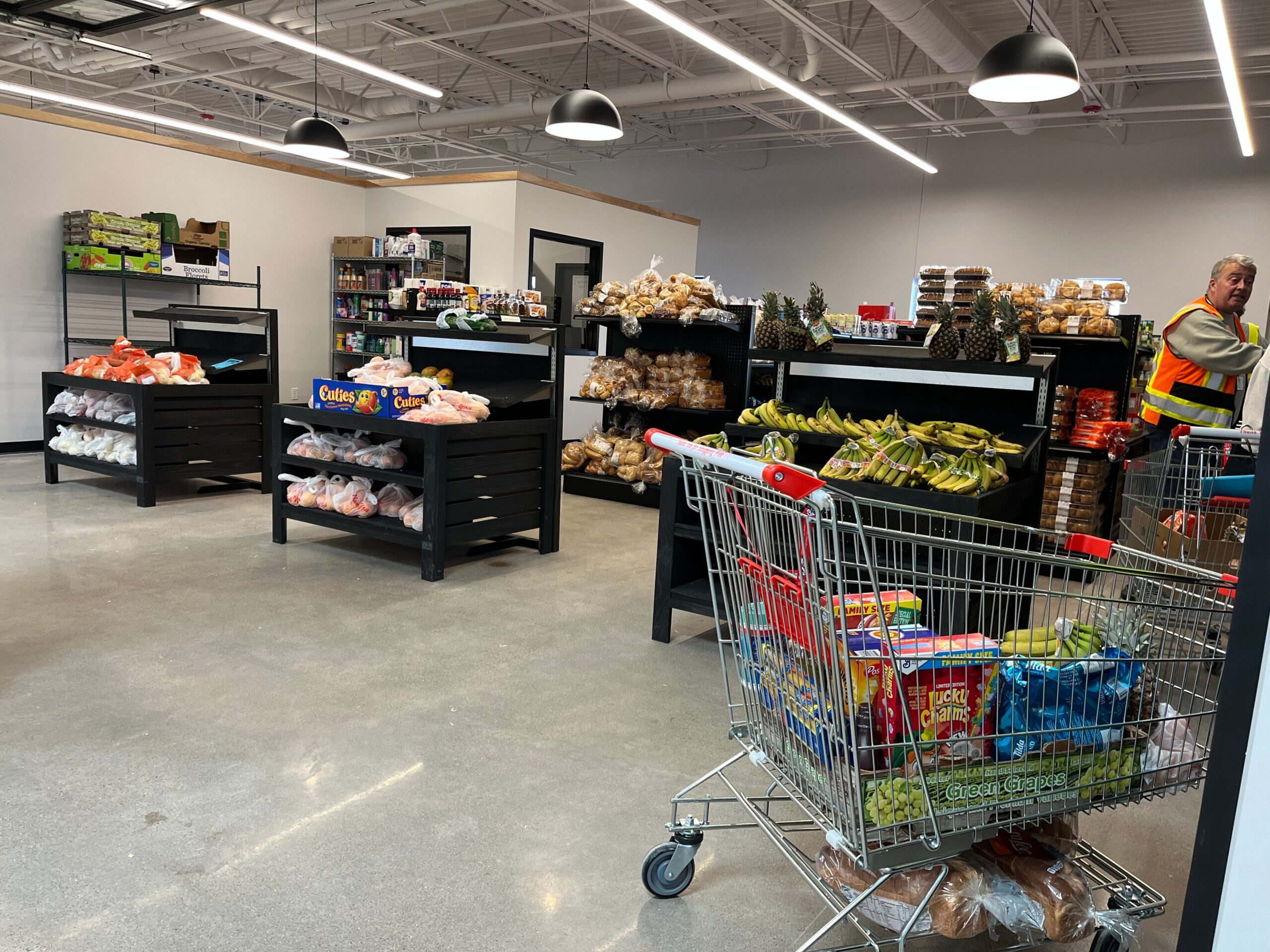
Around the state, food distribution staff said with a higher demand for assistance comes a greater need for volunteers and donations. Sherrie Tussler, CEO of Hunger Task Force, a nonprofit that partners with pantries across Wisconsin, said before the pandemic a majority of regular volunteers, especially in rural areas, were retirees.
“When the pandemic hit, those were people who were at greatest risk for getting sick. So a lot of those people stopped (volunteering). They stayed home, and many of them never came back,” Tussler said.
She said a lack of volunteers can minimize a pantry’s capacity, placing pressure on the person looking for help.
“It causes a lot of stress for people trying to figure out where their food is going to come from,” Tussler said.
The Neighbors’ Place relies on approximately 100 regular volunteers five days a week. Ambrose said she has seen an increase in volunteers because of the hub’s new location and operating model, which allows people to choose what they want instead of being handed a bag of food that might not fit their needs.
“It’s more about creating a shopping experience and not being a charity making people feel like they’re getting a handout,” Ambrose said.
But Hunger Task Force has seen a decrease in donations. Although the cost of food at home has only gone up 2 percent since this time last year, Tussler said it makes a difference for people who are seeing costs rise elsewhere.
“People are less likely to be as generous as they were when they see the bottom line at the checkout,” Tussler said.
Fahrendorf said she sees an uptick in volunteers during the holiday season when giving and gathering are top of mind.
“There’s naturally a higher interest in participating and wanting to volunteer. However, the sad reality is that a lot of our families don’t have resources and food throughout the whole year, not just the holiday season,” Fahrendorf said.
Kinship is looking for the right kind of donations this time of year. Fahrendorf said in November and December, turkey, stuffing, and cranberries dominate food donations. Left with a surplus, Kinship continues to hand out stereotypical holiday food into the new year.
“Ideally our families and our households don’t need, maybe even want, those food items as much, especially if that was a majority of what was available during November and December,” Fahrendorf said.
Tussler said it’s important to capitalize on the influx of donations and volunteers during the holidays. She tries to show first-time volunteers the value of making a regular commitment to volunteerism.
“The biggest hurdle is just being that person who does it once and walks away from it feeling good but then doesn’t use it to change who they are as a person or to convey to other people the importance of volunteerism,” Tussler said.
Editor’s note: This story has been updated to reflect that the number of new families visiting Kinship Community Food Center has increased by 160 percent since fall of 2022.
Wisconsin Public Radio, © Copyright 2026, Board of Regents of the University of Wisconsin System and Wisconsin Educational Communications Board.
